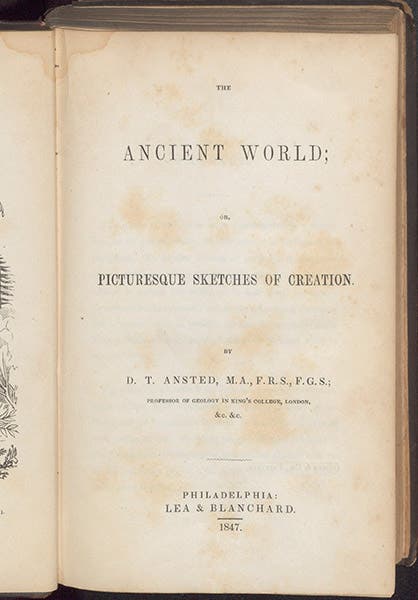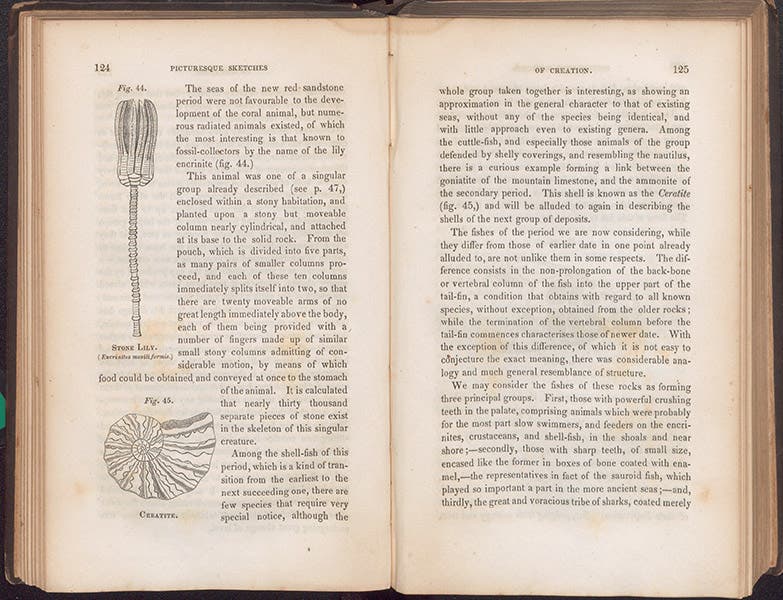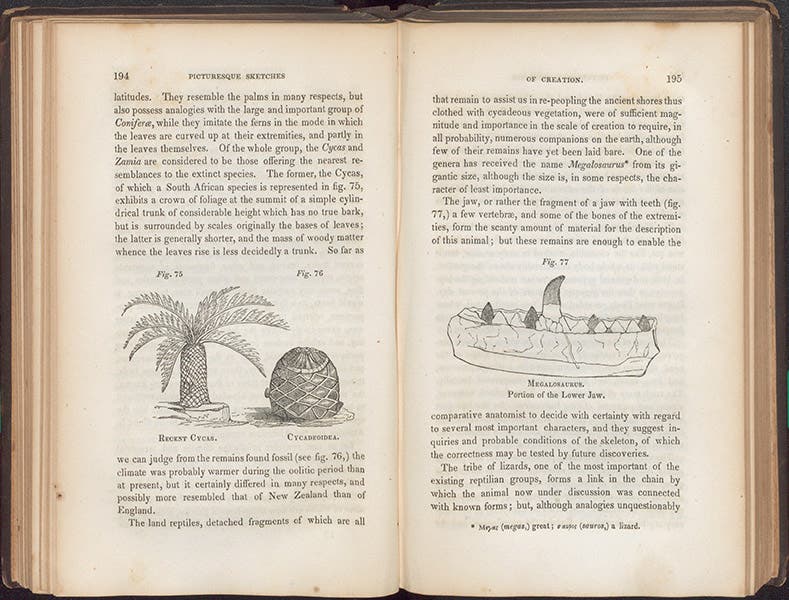Scientist of the Day - David Ansted
David Thomas Ansted, an English geologist and popular science writer, was born Feb. 5, 1814. Ansted had a good career as a geologist, teaching at King's College London, and lecturing as well to members of the British East India Company and a school for civil engineers. He wrote many books on geology and geography, five of which we have in our collections. He probably does not really merit Scientist of the Day status. It is often pointed out that he was a correspondent of Charles Darwin. But I read those letters – there aren't many – and nearly all of them concern an investment of 250£ that Darwin made in a company for which Ansted was seeking financing and which he couldn’t pay back.
The reason we make an exception and include Ansted in these ranks is because of one book that he wrote, called Ancient World: or Picturesque Sketches of Creation (1847). The book was written for the general public, and its purpose was to try to explain what the Earth looked like in the past, when there were no humans around. It is abundantly illustrated, as we see from the several sample openings I have included, and it has an especially nice frontispiece, which depicts the plant life of the Carboniferous period. This opens the book, and says right from the outset, the Earth of the past was different from the Earth we live on today.
Now Ansted was far from being the first to attempt to reconstruct a prehistoric landscape. Historian of science Martin Rudwick wrote an entire book on such recreations, called Scenes from Deep Time: Early Pictorial Representations of the Prehistoric World (1992) which had scores of such illustrations. However, in 1830, such recreations were brand new, and in 1847, the year of Ansted's book, they were still rare, especially those that showed plants rather than animals. Ansted was not included in Rudwick's book, and I have never seen his frontispiece reproduced anywhere, so Ansted’s drawing would seem to be making its digital premiere right here.
In truth, this is not that great a representation. One of his plants, the shorter one at the left, with the acutely-angled branches, is indeed an attempt to give life to a fossil frequently found in English coal beds that was called a Lepidodendron. But as he explains, most of the other plants in his picture are exotic plants from today that look like ancient plants might have looked, such as Norfolk Island pines.
In the text, Ansted makes a credible effort to convince the reader that the Earth is a very old place, and not only was life different in the past, but for am extremely long time, there was no life at all. We have thousands of feet of rock, both igneous and sedimentary, that contain no fossils. This does not fit in well with standard accounts of Creation. But the rocks don’t lie. For Ansted, the geological record is as formidable a book as Scripture.
The two page-openings we include here, chosen almost at random, show, in the fourth image, a crinoid fossil and an ammonite; and in the fifth image, a cycad and the original Megalosaurus jaw that William Buckland found and published in 1824, inaugurating the age of dinosaur discovery.
Dr. William B. Ashworth, Jr., Consultant for the History of Science, Linda Hall Library and Associate Professor emeritus, Department of History, University of Missouri-Kansas City. Comments or corrections are welcome; please direct to ashworthw@umkc.edu.










